
© Paul Kolnik. (Click image for larger version)
Sara Mearns – Swan Queen
www.nycballet.com
Sara Mearns video blog
Dance Magazine interview with some interesting pictures
Sara Mearns has been New York City Ballet’s reigning Swan Queen since her breakout performance in 2006, when she was only nineteen years old and a member the corps de ballet. It was a performance of surprising intensity, edged with danger. This blind intensity is one of Mearns’ most striking qualities. It is as if she were in her own world, living a private drama rather than going through a series of predetermined steps, carefully rehearsed, shaped through countless other interpretations. She breathes new life into the roles of Odette and Odile, but also that of the ballerina in Diamonds, the lonely woman in the closing section of Vienna Waltzes, the gypsy in Brahms-Schoenberg Quartet, the exotic guest in Robbins’ In the Night. A few years ago, I saw her dance Dewdrop in The Nutcracker; she tore across the stage like a gale. People gasped. She fell, but it was worth it; she had elevated Dewdrop from a virtuoso role full of traveling jumps and turns into something more essential: a force. Her intensity can be too much at times; she overpowered the role of the Girl in Green in Dances at a Gathering, a ballet that lives in a kind of gauzy world fragrant with tender memories.

© Paul Kolnik. (Click image for larger version)
Last year, after a series of cancelled performances, she was forced to take some time off because of an injury to her back. It turned out to be serious enough to keep her from the stage for about eight months, during which she tried several kinds of therapy and treatments. At the same time, she satisfied a new curiosity about the world around her, going to concerts and plays and branching out into other styles of dance. She returned to the stage for the winter season, but it’s been a rough road. The joy is there, but not yet the complete physical assurance. Before a recent performance of Diamonds she hurt her foot backstage – after taking a spill in Swan Lake the week before – but went on anyway, pushing through the pain. Her hunger to dance was palpable, as it was the other day when we met for a coffee near the Koch theatre. She is as compelling in person as she is onstage: warm, expansive, down to earth, no-nonsense. In a way, she does not look like the prototypical ballerina; her hair is a messy blonde cascade and she doesn’t hold herself erect or project the stillness one identifies with this rarefied species. But one can sense her physicality, the desire to move, to take up space. We talked about her injury, her cultural explorations, and her powerful desire to dance.
It’s good to see you back on the stage. How does it feel?
It’s a kind of happiness I’ve never really felt before, just being out there and being able to express myself through movement and my dancing. I’m enjoying every single moment instead of worrying I’m going to fall off my leg or something’s not going to work or my partner’s not going to catch me; it’s just the pure joy of being able to dance again. I feel like it’s totally different from before. I mean, I’ve always been at my happiest onstage, dancing, but I don’t get stressed out like I used to. I’m just so grateful to be out there.
Do you tend to be very self-critical?
Yes, and I still am. I’m my worst critic. Sometimes I’ll come offstage and curse because I can’t believe what I just did: this or that was so bad, I’ve never done that before. Sometimes after the show, like recently when I did Diamonds, and it wasn’t one of my best, I was lying in bed and started to go over the entire ballet. “Oh god, I fell off there, or I didn’t even get on pointe there.” But less now than before.
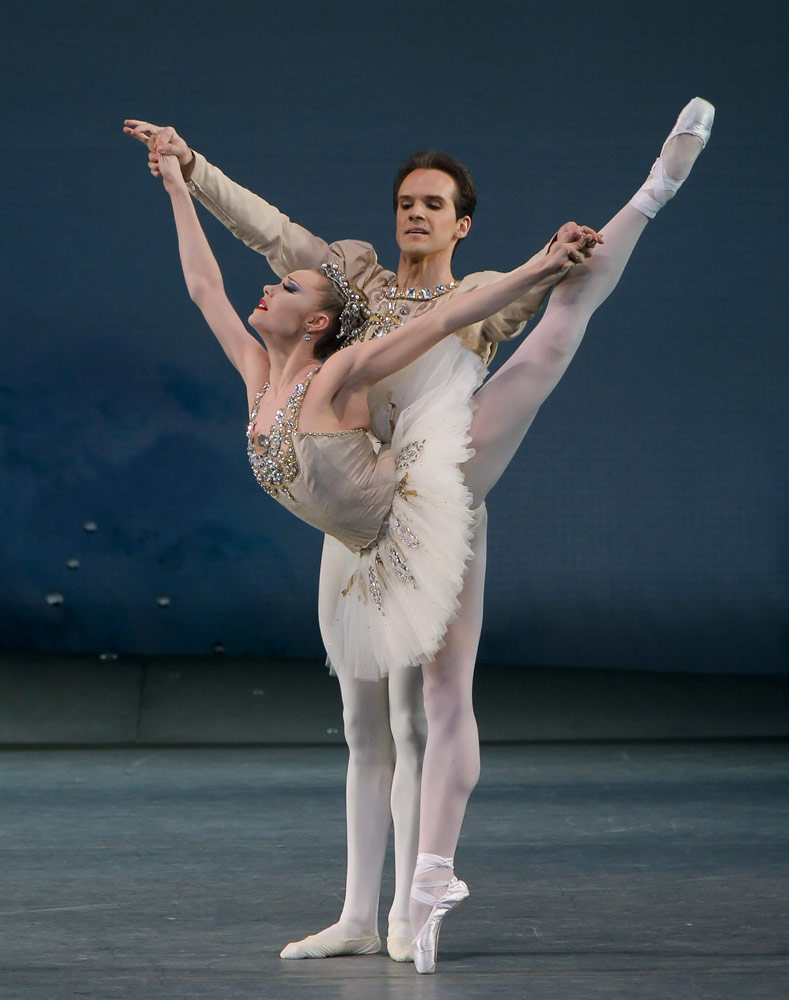
© Paul Kolnik. (Click image for larger version)
You were out for 8 months – what was your injury?
It has to do with my back. I had a rehearsal where I landed from a jump and I didn’t really land on my leg correctly, and my body was just so tired – it was a Sunday and I shouldn’t have been running the ballet I was doing. My back just freaked out. So I tried to keep on dancing and just go to therapy and acupuncture hoping it would calm down but it never did. I had to keep canceling shows. Five people had to replace me in one weekend. My back would go into spasm and the vertebrae in the middle would lock and I wouldn’t be able to twist or bend side to side. I went through about 5 doctors, including neurologists, pain management, a regular NYCB doctor, a sports doctor, and the same amount of therapists. No one could figure out what was wrong with me. Then we thought it was my rib, because my rib is very mobile and it would move in and out of place. So I started getting these injections called prolotherapy, a sugar solution that they inject into the ligaments to create scar tissue. We thought that would stop the rib from moving. But really, it just caused me more pain. My entire back would go into spasm and I would be bawling my eyes out, screaming. I went through three or four sessions of that, and it didn’t work. And then I had to accept that I was injured. I think that was half the battle. Because I was trying so hard to get a quick fix that would make it ok, and that wasn’t going to happen.
How did the injury affect you mentally?
It’s hard because you feel like you are defined by your dancing. I felt like people got to know me and love me or appreciate and respect me because of what I do, and when that was taken away from me, you don’t feel like you deserve the praise or how people feel about you because they’re not seeing you dance. You never give your body and your brain a rest. You’re constantly thinking I’m not there, people aren’t seeing me, I’m alone because people don’t see me out there.
Why did you decide to stay in New York?
I felt like if I left it wasn’t going to do me any good not being around people that could help me. I felt like being in this environment would help me more. I don’t believe going to an island or a beach is going to solve the problem. As soon as I accepted that I was injured and that I was going to have to ride it out, things just started happening. I started meeting amazing people that connected me to this chiropractor that I work with now twice a week. He’s a sports chiropractor. When I first saw him I tried to explain what I was feeling, and he just said, “I’ll fix you.” That was it. He works with hockey players, football players, basketball players. He’s paid to get them back in the game. When I saw his confidence…that really does something to you. Because all the doctors would say to me, “we don’t know what’s wrong with you, it’s mystifying.” What do you do with that? You stew on it, and then you start thinking I’m never going to get better; what if I don’t get back to dancing? Is there something wrong with me or is it just me making it up?

© Paul Kolnik. (Click image for larger version)
Did the experience make you doubt yourself?
When you go through something like this, you actually have less doubt, because you learn so much about who you are as a person, an athlete, an artist; you find out things you never thought. That’s why I stayed here, because I actually went out and did things every night. I went to shows, plays, art exhibits. I’ve lived here for 12 years and have not been able to see anything in this city. That’s partly my fault, and partly what my job entails, but I actually planned something for every single night, and made a commitment to it. Also, you find out the people who truly want to be around you and are 100% supportive of you and will be there no matter what, no matter who you are, where you are, or what mood you’re in. I found a very good group of people…. I also got to meet people that I would never have met if had been doing the schedule I was planning to do.
What sorts of things did you seek out?
I have an interest in theatre, on- and off-Broadway. The writing really makes you think. It made me see things differently. I saw the amazing musical Once. I’m kind of fascinated by the fact that they can go out there and deliver the same show every single night, 8 shows a week, for months. That boggles my mind. We’re so fortunate we don’t have to do the same ballet every night. We get to experience different emotions, different forms of dance. And I saw Alvin Ailey. My God! I saw the new work, by Kyle Abrahams [Another Night]. The dancers look like they’re having such a good time, and they’re so athletic. I was in shock that they keep this up the entire year.
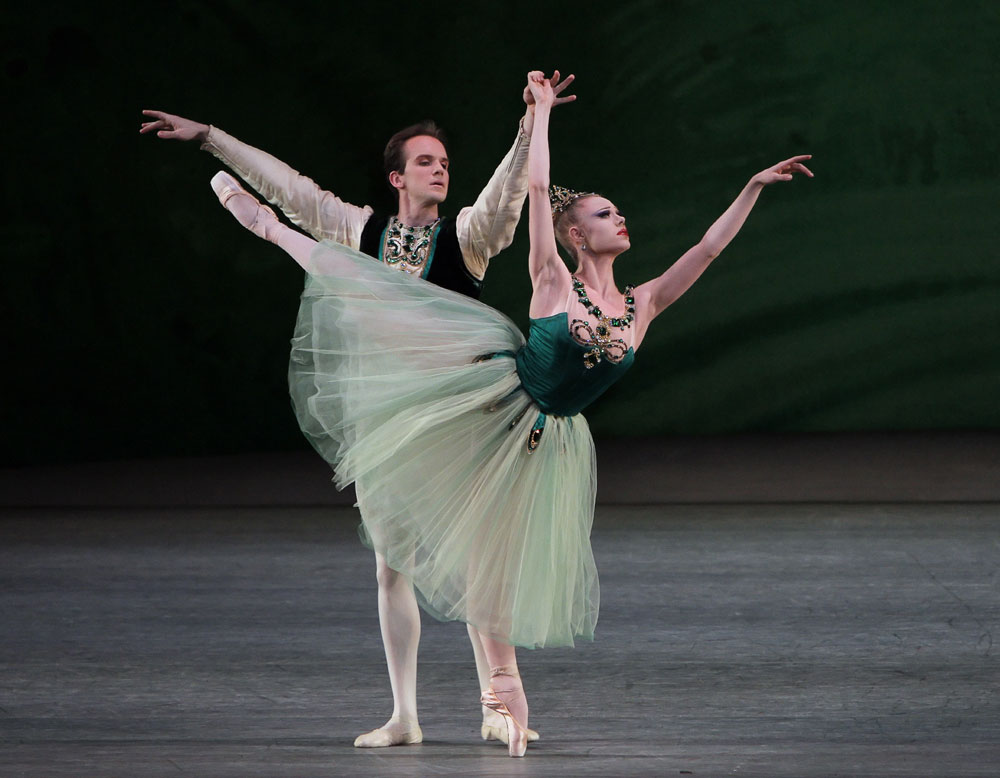
© Paul Kolnik. (Click image for larger version)
Would you like to guest with other companies?
I’ve guested before but it’s not a huge priority. It’s different if there’s a certain production or a choreographer you want to work with. But I don’t really like doing galas. Yes, you get paid a lot of money but that’s not really artistry to me. At New York City Ballet we all have the same sense of what the choreography should look like. I watch the corps and they all have the same musicality, and they all want to dance together, and in that sense it’s sort of like a family. I love the people I dance with. I’m so inspired by the other principals, and I wouldn’t want to watch anybody else next to me. All the dancers in the company feel like we dance the best ballets in the world, the most fun ballets to dance. The last two weeks, during the Tchaikovsky festival, the corps girls would turn to me and say, “this is the best show; I’m having so much fun.” You’re busting your ass and you’re still saying that.
Are you more of a Tchaikovsky girl than a “black and white” dancer?
I don’t have many black and white ballets in my rep, though I love to do them. They’re still modern to this day, even though they were made in the fifties. There’s something so fun about the fact that you can make it so different each time. But I do love big music and the dramatic ballets. I listen to Serenade in the gym and start crying. Even Diamonds, the end of the polonaise when it gets so grand, I just want to cry onstage, it’s so emotional to me.
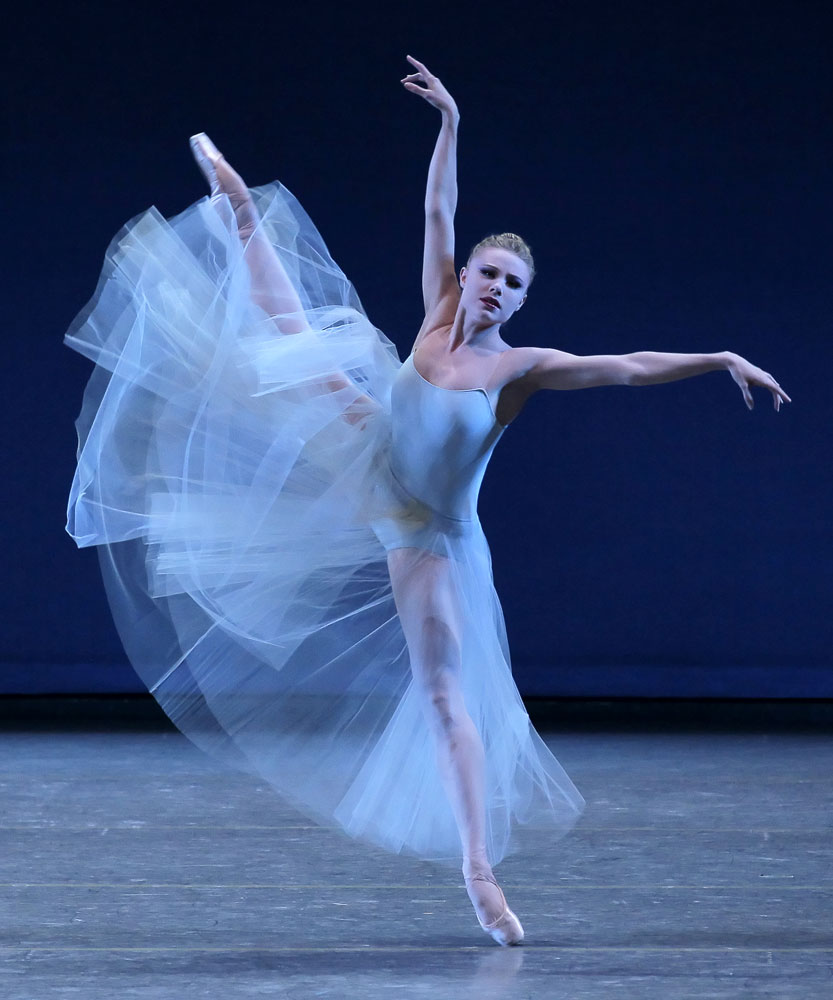
© Paul Kolnik. (Click image for larger version)
You’ve spoken often about your admiration for Natalya Makarova.
I first discovered her when I was ten on a ballet tape my mother gave me, Swan Lake. I still have it. It’s from 1975 on our stage, Live from Lincoln Center. I haven’t stopped watching that tape since. Mostly for Swan Lake, but also just the way she approaches dance and her career, and how artistry always came first. Yes, you have to have good technique and you have to work on it constantly, every single day, but it’s about the character and about the musicality. When she worked with Robbins on Other Dances, a whole new world opened for her. I’ve never seen musicality like that. On the last tape, her hair was short, she was not young, but it looked like she was discovering the steps for the first time but had known them for 20 years. That amazes me. She’s just playing with it. You don’t see a lot of that, everything is so thought through, which is great, but there’s something about just going out there and letting that go and letting the music take you.
Have you met her?
I met her when I was sixteen. We honored her at State Theatre on the promenade and they asked the students who had just performed at the SAB workshop to dance for her, and I think we did Chopiniana. I got to meet her briefly. Peter introduced us. She was my idol, but at that point I hadn’t done Swan Lake so it didn’t mean as much to me as it does now.

© Paul Kolnik. (Click image for larger version)
What comes first for you, the music or the story?
The music comes first, hands down. The music will tell you everything. It will guide you to where you need to go. It’s hard to describe how I go to that place when I get out there and hear that music. There’s nothing else.
What’s it like having a promising new choreographer in house [Justin Peck]?
It’s quite inspiring having a young dancer like Justin making such successful works on his own colleagues. It seems like he knows how to make them move from watching them and dancing beside them all these years. One day, on the monitor in the physical therapy room, I was watching a rehearsal going on onstage and I couldn’t figure out who the man running the rehearsal was. He was dancing all the steps. Usually you know right away who it is from their movement, but this time I was stumped. Later I found out it was Justin dancing his own choreography and I was completely blown away. I had never seen him move like that! I hope one day I get the opportunity to work with Justin.
I hear you have a big project in the works with the New York Philharmonic.
Yes, this summer I’ll be performing in their season finale. This project has been in the works for over a year. It will be an all-Stravinsky program starting with Le Basier de la Fée and ending with Petroushka. The director, Doug Fitch, and the choreographer, Karole Armitage, will create a theatrical production that will take place onstage in front of the orchestra. I’ll be dancing with my partner, Amar Ramasar. This is one of the most exciting projects I have ever been a part of because live classical music has been part of my entire career and having the opportunity to perform with one of the foremost orchestras in the world is like a dream come true. I try to see the Philharmonic at least once a week and without fail I am brought to tears because of how powerful and rapturous the sound is.

© Paul Kolnik. (Click image for larger version)
[A week after our original interview, I checked in with Ms. Mearns about her most recent troubles with her foot.]
How did your recent foot injury come about and how is it progressing?
I recently had a setback – I took a bad fall offstage during a performance and the pain and injury hit me a week later. I had to get a cortisone shot and take a week off. It felt like I had taken steps back from the progress I was making. I had a few days of thinking I had let people down, including myself, and also feeling like the rug had been taken out from under me again. But if the eight months taught me anything it’s that patience is a virtue and accidents happen and there was nothing I could have done to prevent this. I’ve made the most of my time and kept positive and busy. I will be back up and running next week on the opening night of Sleeping Beauty as the Lilac Fairy. This will be my tenth anniversary of doing the part. It was my first principal role when I performed it in the Workshop performance at SAB. So it has a special place in my heart. It’s definitely one of my favorite roles.






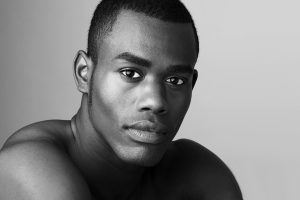
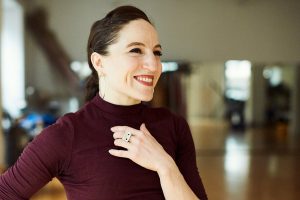



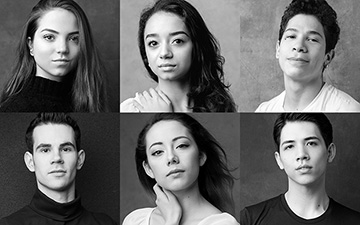



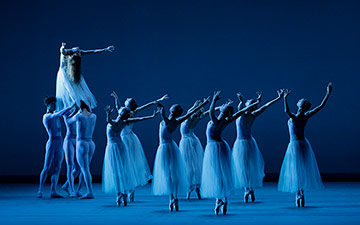

Thank you Maria for an insightful interview with a fascinating dancer.
[…] Here is a recent interview with Sara Mearns of New York City Ballet, for DanceTabs, in which she discusses recent struggles with injury, her love of dance, and some interesting upcoming plans. […]